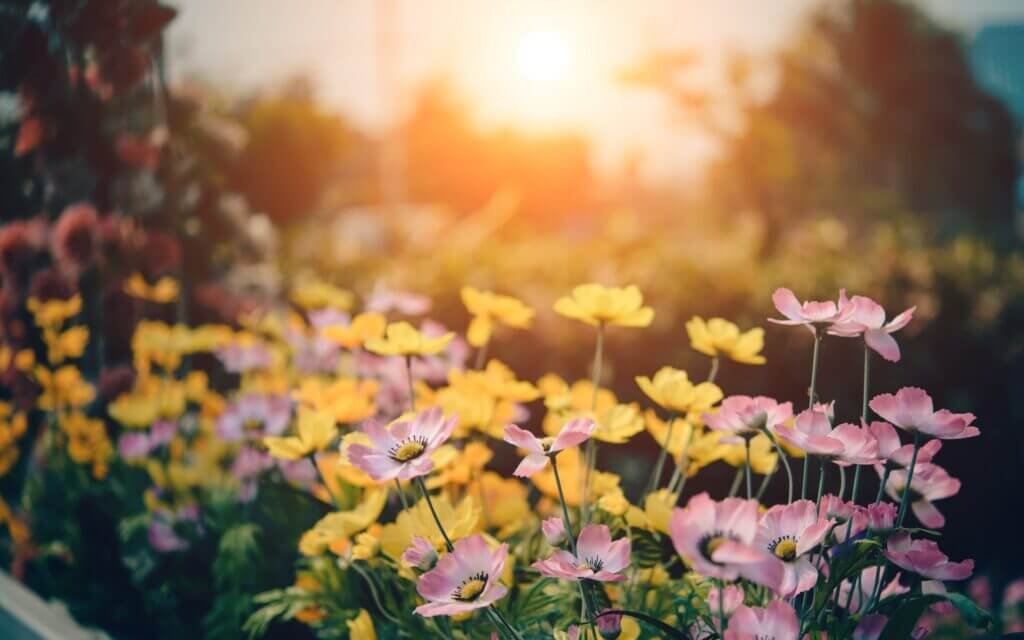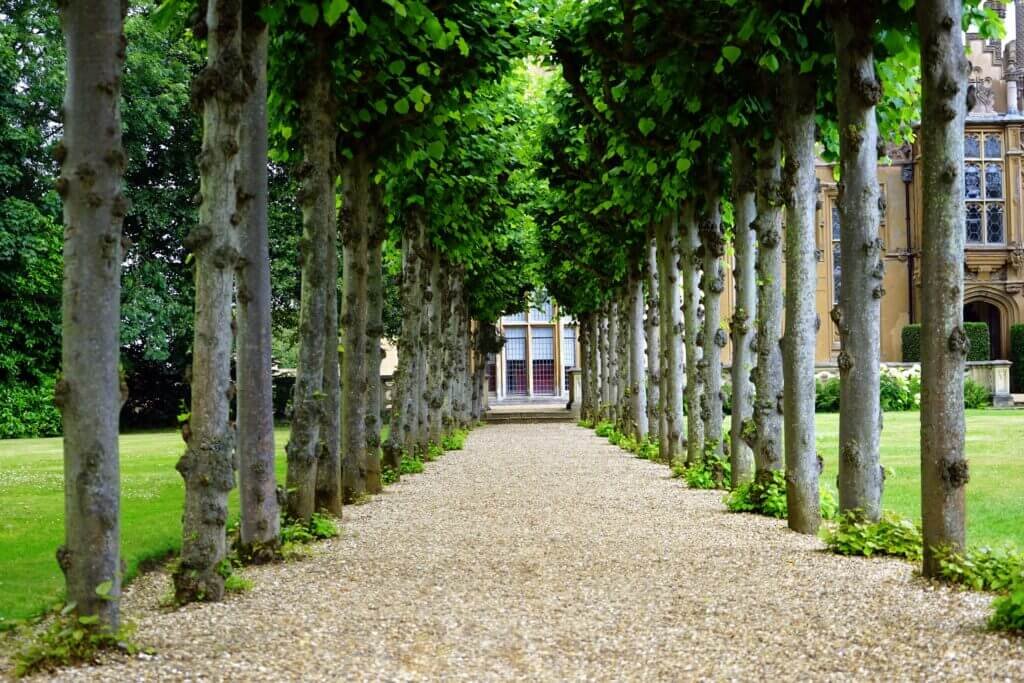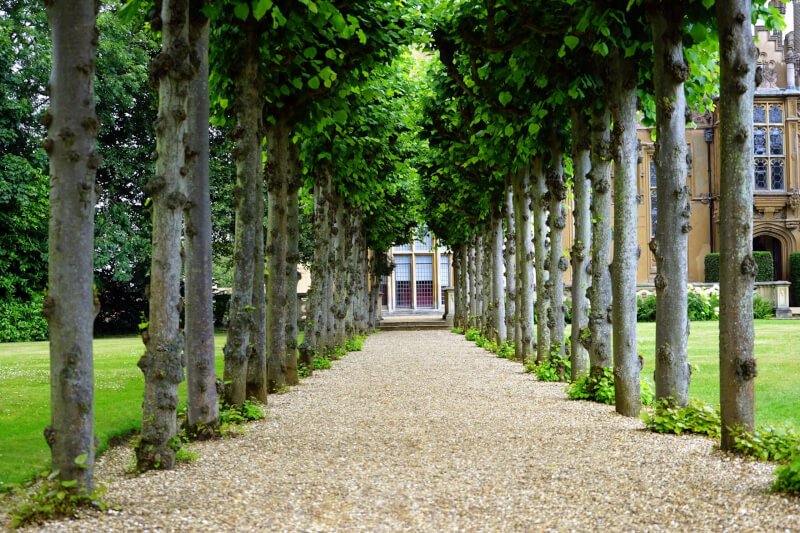Have you ever wondered how to start a garden in a small urban space? Whether you live in a bustling city or a cozy apartment, creating your own garden oasis is not only possible, but also surprisingly easy. With a few simple steps and a touch of creativity, you can transform even the tiniest of spaces into a flourishing green haven. In this article, we’ll explore practical tips and strategies for starting a garden in a small urban space, allowing you to connect with nature right in the midst of the bustling city life. So, let’s roll up our sleeves and dig into the world of urban gardening!

Choosing the Right Plants
Determining the Available Sunlight
When starting a garden in a small urban space, one of the first things you need to consider is the amount of sunlight your plants will receive. Take note of the different areas in your space and observe where the sun shines the most throughout the day. Some plants thrive in full sun, while others prefer partial shade. By understanding the sunlight conditions in your urban space, you can choose plants that will flourish in that specific environment.
Considering the Size and Growth Habit of Plants
Another factor to keep in mind when selecting plants for your small urban garden is their size and growth habit. Since space is limited, it is essential to choose plants that won’t outgrow their designated area. Opt for compact or dwarf varieties of plants whenever possible, as they are better suited for small spaces. Additionally, consider how the plants will grow and spread over time. Some plants have a tendency to spread rapidly, which might overcrowd your garden if not properly managed.
Selecting Plants Suitable for Urban Conditions
Urban environments can pose unique challenges for plants, such as pollution and limited access to natural resources. Therefore, it is crucial to select plants that are resilient and can adapt to urban conditions. Look for plants that have a high tolerance for air pollution and can thrive in containers or small spaces. Native plants or those specifically bred for urban environments are often good choices, as they are more likely to thrive and require less maintenance in an urban garden setting.
Preparing the Soil
Testing the Soil pH and Composition
Before you start planting, it is important to test the soil pH and composition of your urban garden. Soil testing kits are readily available and can provide valuable information about the pH level and nutrient content of your soil. This knowledge will help you determine if any amendments or adjustments need to be made to create an optimal growing environment for your plants.
Amending the Soil with Organic Matter
In small urban gardens, the quality of the soil is crucial to the success of your plants. To improve soil fertility and structure, it is recommended to amend the soil with organic matter. Compost, well-rotted manure, and leaf mold are excellent sources of organic matter that can be mixed into the soil. These additions enhance water retention, improve drainage, and provide essential nutrients for plant growth. Regularly adding organic matter to your soil will help maintain its health and fertility over time.
Improving Drainage in Container Gardens
In container gardens, proper drainage is essential to prevent waterlogging and root rot. To improve drainage in your urban garden containers, ensure that each container has drainage holes at the bottom. These holes allow excess water to escape and prevent the soil from becoming waterlogged. Additionally, you can place a layer of gravel or small stones at the bottom of the container before adding soil to further enhance drainage. Proper drainage in container gardens helps promote healthy root growth and prevents water-related issues.

Container Gardening
Choosing the Right Containers
When it comes to container gardening in a small urban space, selecting the right containers is crucial. Consider the size, material, and style of the containers to ensure they are suitable for your chosen plants and the available space. Opt for containers that are large enough to accommodate the root system of your plants and provide room for growth. Lightweight materials, such as plastic or fiberglass, are often preferred for urban gardens as they are easier to move and won’t add unnecessary weight to your space.
Creating Drainage Holes in Containers
As mentioned earlier, proper drainage is essential in container gardening. If your chosen containers do not have pre-drilled drainage holes, it is important to create them. Use a drill with a small drill bit to make holes at the bottom of each container, ensuring there is enough space for excess water to escape. Be cautious not to make the holes too large, as this may cause soil to escape as well. Adequate drainage holes in containers help prevent water buildup and promote healthy plant growth.
Selecting the Right Potting Mix
Choosing the correct potting mix is vital for the success of your container garden in a small urban space. Regular garden soil is not suitable for most container plants, as it tends to become compacted and drain poorly in containers. Instead, opt for a high-quality potting mix that is specifically formulated for containers. These mixes are usually lightweight, well-draining, and contain added nutrients to support plant growth. Avoid using soil from your garden, as it can introduce pests and diseases to your container plants.
Vertical Gardening
Utilizing Vertical Space with Trellises
In small urban spaces, utilizing vertical space is key to maximizing your gardening potential. One way to do this is by incorporating trellises into your garden design. Trellises are vertical structures that plants can climb and attach to, allowing them to grow upwards instead of taking up valuable ground space. Install trellises against walls or fences and choose climbing plants, such as tomatoes or cucumbers, that can be trained to grow vertically. This technique not only saves space but also adds visual interest to your urban garden.
Choosing Vining Plants for Vertical Gardens
When planning a vertical garden, selecting the right vining plants is essential. Look for plants with flexible stems and tendrils that can easily attach to structures like trellises or wire frames. Popular vining plants for vertical gardens include beans, peas, morning glories, and climbing roses. Consider the specific requirements of these plants, such as sunlight, water, and support needs, to ensure they will thrive in your urban space. Vining plants not only add a vertical element to your garden but also provide shade and privacy when fully grown.
Creating Vertical Planters
Another option for vertical gardening in small urban spaces is the use of vertical planters. Vertical planters are specially designed containers or structures that allow you to stack plants vertically. These planters can be freestanding or mounted on walls or fences. When choosing or constructing vertical planters, consider factors such as size, stability, and ease of maintenance. Select plants with shallow root systems or those that adapt well to container gardening to ensure successful growth in vertical planters. Vertical gardening is an excellent space-saving technique that adds a beautiful focal point to your urban garden.

Watering and Irrigation
Determining the Watering Needs of Different Plants
Proper watering is crucial for the health and vitality of your plants, regardless of the size of your urban garden. Different plants have different watering requirements, so it is important to determine the watering needs of each plant individually. Research the specific watering needs of your chosen plants or consult a gardening guide or expert for guidance. Factors such as plant species, time of year, and weather conditions will influence the frequency and amount of water needed. Avoid overwatering or underwatering your plants by carefully monitoring their moisture levels.
Using Self-Watering Containers
Self-watering containers are an excellent option for small urban gardens, as they help reduce the frequency of manual watering and ensure consistent moisture levels for your plants. These containers have a reservoir that holds water, and a wicking system that draws water up into the soil as needed. Self-watering containers are especially beneficial for busy individuals or those with limited time to dedicate to watering their plants. They can help prevent the risk of overwatering or underwatering and provide a more efficient way of irrigating plants in urban spaces.
Installing Drip Irrigation Systems
For larger urban gardens or those with numerous plants, installing a drip irrigation system can be a time-saving and efficient way to provide water to your plants. A drip irrigation system allows water to slowly and directly drip into the soil at the base of each plant, providing moisture precisely where it is needed. This method minimizes water loss due to evaporation and ensures that plants receive a consistent and controlled water supply. Drip irrigation systems can be customized to suit the layout and needs of your garden, and can even be automated for convenience.
Providing Adequate Light
Positioning Plants Near Windows
When gardening in a small urban space, maximizing natural light is essential for plant growth. Position your plants near windows or in areas that receive the most sunlight throughout the day. South or west-facing windows tend to provide the most sunlight, while north or east-facing windows may offer more limited light. Rotate your plants periodically to ensure they receive an even amount of sunlight and avoid becoming lopsided. Observing the sunlight patterns in your space and strategically placing your plants can help them thrive in an urban environment.
Using Artificial Grow Lights
In situations where natural light is limited or inconsistent, supplementing with artificial grow lights can be beneficial for your plants. Grow lights are designed to emit specific wavelengths of light that plants need for photosynthesis. When choosing grow lights, look for full-spectrum LED or fluorescent lights that simulate natural sunlight. Place the lights above your plants at a suitable distance to provide adequate light intensity. Keep in mind that different plants have varying light intensity requirements, so adjust the height and duration of lighting accordingly.
Maximizing Natural Light with Reflectors
To make the most of the natural light available in your small urban space, consider using reflectors. Reflectors maximize the amount of sunlight that reaches your plants by redirecting and intensifying the light. They can be as simple as strategically placed mirrors or reflective materials positioned near your plants. Reflectors are particularly useful when growing plants in areas that receive limited direct sunlight, such as balconies or shaded corners. By enhancing natural light with reflectors, you can supplement the lighting conditions in your urban garden and promote healthy plant growth.
Maintaining and Monitoring
Regularly Watering and Fertilizing Plants
To keep your plants healthy and thriving, it is important to establish a regular watering and fertilizing routine. Monitor the moisture levels of your soil, and water your plants accordingly. Pay attention to signs of water stress, such as wilting or yellowing leaves, and adjust your watering schedule as needed. In addition to watering, provide your plants with regular doses of fertilizer to replenish essential nutrients in the soil. Use a balanced, water-soluble fertilizer or organic alternatives to promote healthy growth and vibrant blooms or foliage.
Pruning and Removing Dead or Diseased Parts
Pruning is an essential maintenance task in any garden, including small urban spaces. Regularly inspect your plants for dead, damaged, or diseased parts and promptly remove them. Pruning not only improves the overall appearance of plants but also promotes their health and encourages new growth. Use clean and sharp pruning shears or scissors to prevent the spread of diseases. Additionally, remove any fallen leaves or debris from your urban garden to minimize the risk of pests or diseases.
Protecting Plants from Pests and Diseases
Pests and diseases can be a challenge in small urban gardens due to their close proximity to other plants and limited airspace. To protect your plants from potential damage, regularly inspect them for signs of pests or diseases. If detected, promptly treat the affected plants using organic or chemical methods depending on your preferences. Implementing preventive measures, such as regularly cleaning and disinfecting your tools and using disease-resistant varieties, can help minimize the risk of pest and disease infestations. By staying vigilant and taking proactive steps, you can maintain a healthy and thriving garden in your urban space.
Companion Planting
Choosing Companion Plants for Urban Gardens
Companion planting is a technique that involves planting specific plant species together to provide mutual benefits. In small urban gardens, companion planting can help maximize space and enhance overall plant health. When selecting companion plants, consider their compatible growth habits, nutrient requirements, and pest-repelling properties. For example, planting marigolds alongside vegetables can help deter pests, while certain herbs can enhance the flavors of neighboring herbs or vegetables. Research companion planting combinations or consult a gardening guide to discover which plants work well together in urban gardens.
Using Companion Plants to Deter Pests
One of the significant advantages of companion planting in urban gardens is its ability to repel pests naturally. Certain plant combinations can help deter common garden pests, reducing the need for chemical pesticides. For instance, planting garlic or onions near roses can help repel aphids, while nasturtiums can attract aphids away from vegetable crops. By incorporating plants with pest-repelling properties into your urban garden, you can create a natural defense system that keeps pests at bay and promotes a healthy growing environment.
Beneficial Plant Combinations
Companion planting isn’t just about pest control; it can also lead to beneficial plant combinations that improve overall productivity and health. Some plants have mutually beneficial relationships, such as nitrogen-fixing plants that enrich the soil with nitrogen, benefiting neighboring plants. For example, planting legumes, like beans or peas, alongside leafy greens can provide a natural source of nitrogen for the greens. These symbiotic relationships can be highly advantageous in small urban gardens where the soil may lack certain nutrients. By strategically pairing plants with mutually beneficial qualities, you can create a harmonious and thriving garden.
Harvesting and Yield
Knowing when to Harvest Different Vegetables
Knowing when to harvest your vegetables is crucial to ensuring optimal flavor and quality. Each vegetable has different signs of ripeness, so it is essential to familiarize yourself with the specific harvesting requirements of your chosen plants. Look for visual cues, such as changes in color or size, as well as taste and texture indicators when determining if a vegetable is ready to be picked. Harvesting at the right time ensures that you enjoy the full flavor and nutritional benefits of your vegetables in your urban garden.
Maximizing Yield in Small Spaces
In small urban gardens, maximizing yield is key to making the most of your limited space. Planting techniques such as succession planting or intercropping can help optimize space and increase overall productivity. Succession planting involves planting new crops as soon as one crop is harvested, effectively extending the growing season and maximizing yield. Intercropping, on the other hand, involves planting different crops in close proximity to make efficient use of space and resources. By implementing these techniques, you can continually harvest fresh produce from your urban garden throughout the growing season.
Caring for Plants to Ensure Continual Harvest
Consistent care and maintenance of your plants are essential to ensure a continual harvest in your small urban garden. Regularly monitor the health of your plants, water them adequately, and address any nutrient deficiencies or pest issues promptly. Avoid allowing plants to become overcrowded or compete for resources, as this can hinder their growth and productivity. Additionally, provide support for tall or vining plants to prevent them from collapsing under their own weight. By providing proper care and attention to your plants, you can enjoy a bountiful and continuous harvest in your urban garden.
Managing Space and Organization
Using Vertical Planters with Multiple Tiers
In small urban gardens, efficient use of space is paramount. Vertical planters with multiple tiers can help maximize the growing area while adding visual appeal to your garden. These planters allow you to stack plants vertically, utilizing vertical space that would otherwise go unused. Consider the available space in your garden and opt for vertical planters with multiple tiers that suit your needs. This space-saving technique is particularly useful for growing herbs, small vegetables, or flowers in a limited urban space.
Optimizing Space with Hanging Gardens
Hanging gardens are an excellent way to optimize space and add greenery to your small urban garden. By suspending planters from walls, fences, or overhead structures, you can create a vertical oasis in even the smallest of spaces. Use hanging baskets or containers to grow a variety of plants, such as trailing vines, flowers, or even herbs. Hanging gardens not only add visual interest but also save valuable ground space, making them a popular choice for urban gardeners looking to maximize their growing potential.
Organizing Tools and Supplies
Organization is key when it comes to managing a small urban garden efficiently. With limited space, it is crucial to keep your tools and supplies well-organized and easily accessible. Invest in a compact tool storage solution, such as a hanging rack or a portable gardening caddy, to keep your tools organized and prevent clutter in your urban garden. Determine the essential supplies you need, such as potting soil, seeds, and fertilizers, and establish a designated storage area for them. By keeping your garden tools and supplies organized, you can make the most of your small urban space and ensure a seamless gardening experience.
In conclusion, starting a garden in a small urban space may initially seem challenging, but with the right plant selection, soil preparation, and gardening techniques, it is entirely achievable. By determining the available sunlight, considering the size and growth habit of plants, and selecting plants suitable for urban conditions, you can ensure the success of your urban garden. Preparing the soil by testing pH and composition, amending it with organic matter, and improving drainage in container gardens lays the foundation for healthy plant growth. Container gardening, vertical gardening, and companion planting techniques allow you to make the most of limited space while maximizing yield and promoting efficient use of resources. Adequate watering and irrigation, along with providing adequate light, are essential for plant health, and regular maintenance, monitoring, and care ensure continual harvest and prevent pest and disease issues. Lastly, managing space and organization through the use of vertical planters, hanging gardens, and efficient tool and supply storage further optimize the functionality and aesthetics of your small urban garden. With these comprehensive guidelines and a friendly approach, you can successfully start and maintain a thriving garden in a small urban space.


